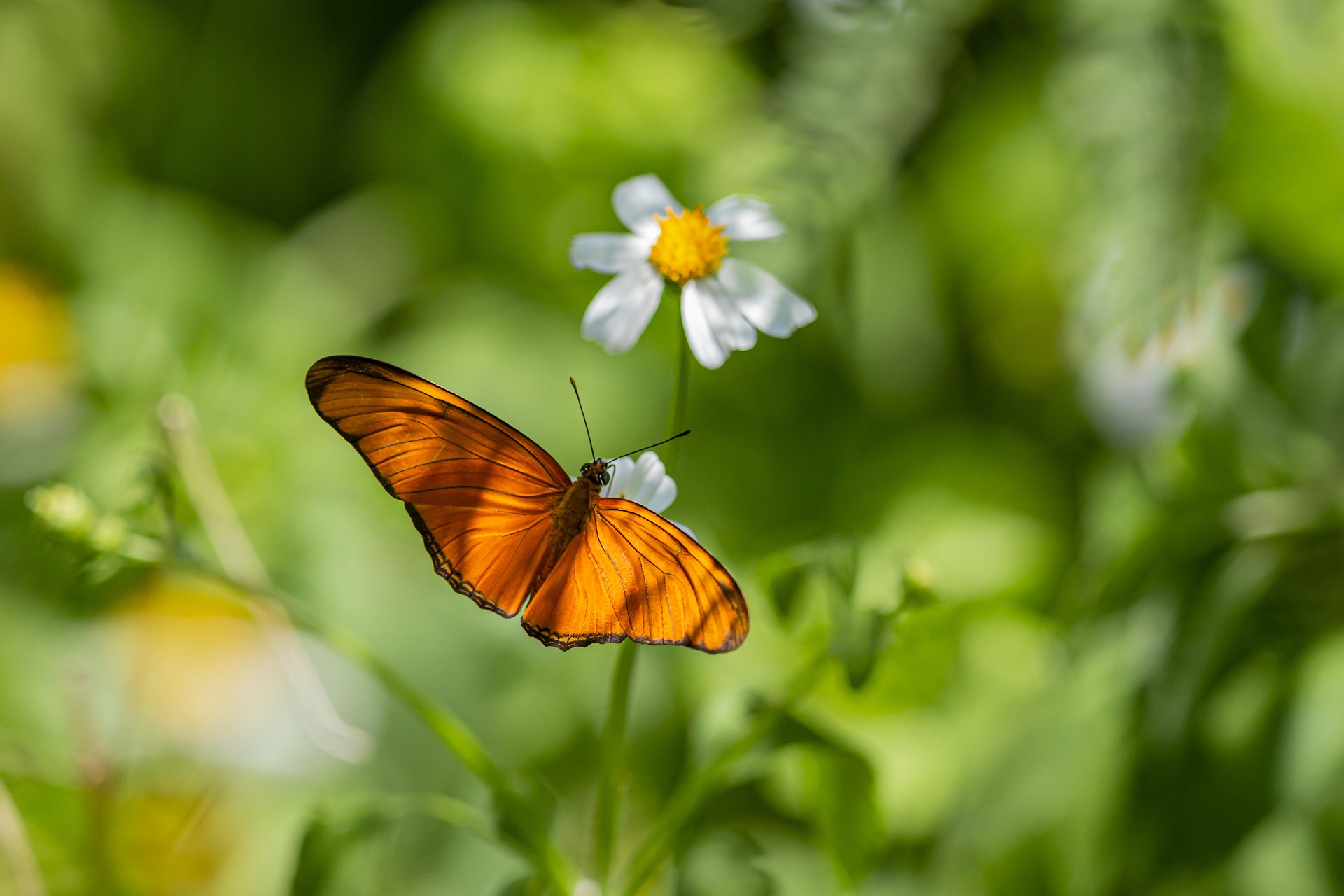The Julia Heliconian (Dryas iulia), also known simply as Julia, is a species of butterfly belonging to the Nymphalidae family. Here’s a detailed description:
- Appearance: The Julia Heliconian is a medium-sized butterfly with a wingspan ranging from 65 to 85 millimeters. It has striking orange wings with black margins and markings. The upper side of the wings is predominantly orange with black markings, while the underside is paler with additional markings and spots. The wings also feature a row of small, white spots along the outer edges.
- Habitat: Julia Heliconians are commonly found in tropical and subtropical regions, including Central and South America, as well as parts of the southern United States. They inhabit a variety of habitats, including forests, forest edges, gardens, and disturbed areas with suitable nectar sources and larval host plants.
- Behavior: Julia Heliconians are strong and fast fliers, often seen gliding gracefully among the trees or feeding on flowers. They have a distinctive flight pattern characterized by rapid wing beats interspersed with gliding. Adults feed primarily on flower nectar, using their long proboscis to reach deep into the floral tubes.
- Life Cycle: The Julia Heliconian undergoes a complete metamorphosis, progressing through egg, larva (caterpillar), pupa (chrysalis), and adult stages. The caterpillars feed on various species of passionflower vines (Passifloraceae), which serve as larval host plants, while the adults primarily feed on flower nectar.
- Conservation: While the Julia Heliconian is not considered globally threatened, it may face localized threats due to habitat loss, habitat fragmentation, and changes in land use. Conservation efforts aimed at preserving and restoring tropical habitats, as well as maintaining suitable larval host plants and nectar sources, can benefit not only the Julia Heliconian but also other butterfly species and biodiversity in general.
The Julia Heliconian is admired by enthusiasts and researchers for its beauty, behavior, and ecological importance as a pollinator in tropical ecosystems. Understanding its habitat requirements and conservation needs is crucial for ensuring its long-term survival.
Visited 872 times, 7 visit(s) today
Views: 1662
Subscribe to the newsletter:
